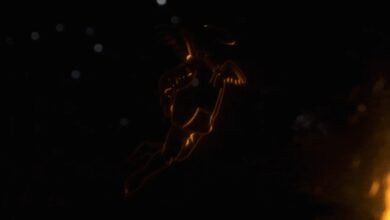Drop Dead Clothing: The Punk-Rock Revolution in Streetwear

In the tremendous world of mold, where patterns glint like brief blazes, as it were a few brands oversee to carve a bequest that withstands the test of time. Drop Dead Clothing is one such brand—born from the fretful soul of punk shake, supported in the underground scenes, and grasped by nonconformists, rebels, and visionaries around the world. A name that resists standards, avoids standard desires, and flourishes in the flighty, Drop Dead has gotten to be synonymous with elective design, mixing gothic aesthetics with urban streetwear.
The Birth of Drop Dead
Drop Dead Clothing was established in 2005 by Oliver Sykes, the puzzling frontman of the metalcore band Bring Me the Skyline. As a performer profoundly dug in in the elective scene, Sykes looked for an road to interpret his creative vision past music. He needed to make a clothing line that reverberated with the same crude vitality, apprehension, and unfiltered self-expression that characterized his music. The result was Drop Dead—an strange brand that talked specifically to a era baffled with the mainstream.
The Tasteful and Influence
What makes Drop Dead unmistakable from customary streetwear brands is its proud grasp of elective culture. From gothic frightfulness and cyberpunk impacts to anime-inspired visuals and dystopian themes, Drop Dead’s tasteful is a softening pot of subcultures. Its plans frequently feature:
Grunge and Punk Motivations – Tore textures, bothered surfaces, and a DIY ethos reminiscent of early punk rock.
Dark, Horrifying Topics – Cranium themes, ghostly animals, and enigmatic images that adjust with gothic and frightfulness elements.
Pop Culture References – Collaborations with religion classics like The Bad dream Some time recently Christmas and Sonic the Hedgehog, reinterpreting recognizable symbols through Drop Dead’s signature lens.
Vivid Outlines and Striking Typography – Hand-drawn plans, graffiti-style design, and defiant trademarks that dismiss societal norms.
Drop Dead isn’t fair almost clothing; it’s a visual disobedience. Each piece tells a story—one of rebellion, creative energy, and the dismissal of mediocrity.
The DIY Ethos and Feasible Vision
Unlike numerous fast-fashion brands that prioritize mass generation, Drop Dead remains furiously free, guaranteeing that inventiveness isn’t weakened for the purpose of benefit. This DIY ethos has been apparent since its beginning, with Sykes himself frequently contributing to the plan handle. Limited-edition drops, hand-detailed pieces, and a center on quality over amount set Drop Dead separated from the rest.
In later a long time, Drop Dead has too taken strides toward supportability. Recognizing the natural fetched of design, the brand has turned towards utilizing moral sourcing, reused materials, and eco-friendly generation procedures. This move has not as it were fortified its commitment to elective mold but too adjusted it with the developing request for capable consumerism.
The Community and Social Impact
Drop Dead is more than a clothing brand—it’s a development. Its impact amplifies past fair attire, serving as a signal for those who feel like pariahs in a copy-cat world. With a furiously steadfast fanbase, Drop Dead has made a subculture of its claim, where independence is celebrated, and self-expression is paramount.
The brand’s association to music, craftsmanship, and elective ways of life has made it a staple among artists, skaters, tattoo specialists, and creatives. Celebrities, influencers, and underground symbols alike have been spotted wearing Drop Dead, encourage cementing its notoriety as a pioneer in elective fashion.
Collaborations and Restricted Drops
One of the most energizing perspectives of Drop Dead is its collaborative soul. Over the a long time, the brand has joined strengths with incredible pop culture establishments, underground specialists, and indeed gaming studios. These collaborations breathe modern life into classic characters, mixing wistfulness with a punk-inspired edge.
Some of its most eminent collaborations include:
The Bad dream Some time recently Christmas Collection – A hauntingly excellent tribute to Tim Burton’s classic.
Sonic the Hedgehog Collaboration – A nostalgic however present day take on the adored video diversion icon.
Crossovers with Autonomous Craftsmen – Restricted drops highlighting craftsmanship from underground artists and road artists.
These collaborations not as it were grow Drop Dead’s reach but too fortify its position as a brand that flourishes on reevaluation and imaginative storytelling.
The Future of Drop Dead Clothing
As mold proceeds to advance, Drop Dead remains enduring in its commitment to remaining genuine to its roots. It has effectively stood up to the weight to accommodate, choosing instep to thrust boundaries, challenge standards, and rethink what elective design can be.
Looking ahead, Drop Dead Clothing’s future shows up as striking as its plans. With a developing accentuation on supportability, unused collaborations on the skyline, and an ever-expanding community of given adherents, the brand appears no signs of abating down. Whether through limited-run collections, immersive pop-up encounters, or computerized developments, Drop Dead proceeds to shape the future of streetwear with an unwavering punk attitude.
Conclusion
Drop Dead Clothing is more than fair a brand—it’s an character, a articulation, and a way of life. Born from the underground, fueled by inventiveness, and maintained by an faithful commitment to independence, it has carved its claim path in the design industry. For those who set out to be distinctive, Drop Dead isn’t fair clothing; it’s armor for the rebels, the visionaries, and the ones who deny to be tamed.
So, whether you’re drawn to its dull aesthetics, its punk shake soul, or its commitment to aestheticness, one thing is certain—Drop Dead Clothing isn’t fair design. It’s a insurgency.




